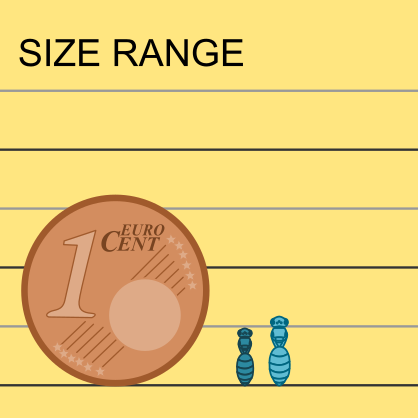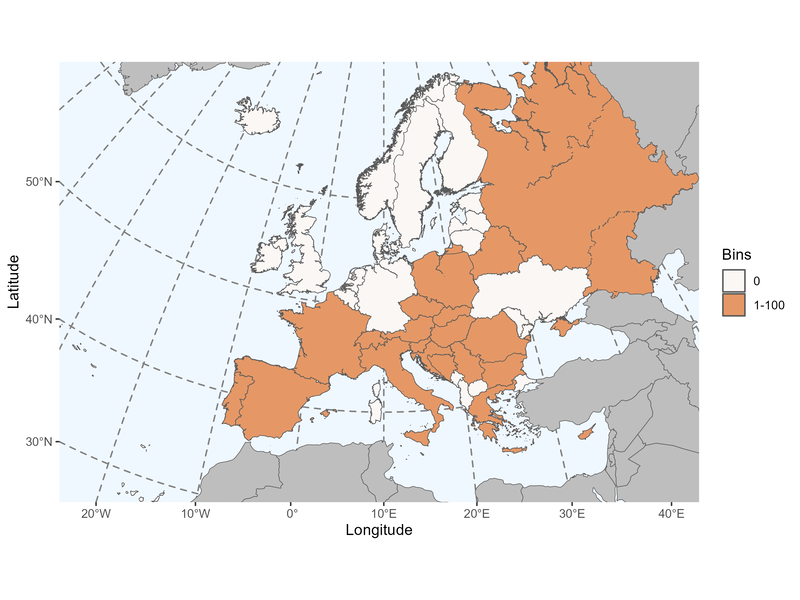Author: Jurine, 1807
|
Type species: Pasites maculata, 1807, by original designation
Synonyms: Morgania Smith, 1854; Omachthes Gerstaecker, 1869; Homachthes Dalla Torre, 1896; Omachtes Friese, 1909; Pasitomachthes Bischoff, 1923; Pasitomachtes Sandhouse 1943. |
Clade: Anthophila
Family: Apidae Subfamily: Nomadinae Tribe: Ammobatini |
|
Distinctive traits
|
Pictures of distinctive traits
|
Morphologically close genera, and how to distinguish them:
Pasites species have a flat metanotum, tergite 1 much longer than tergite 2, sternite 5 surrounds entirely the basal part of sternite 6, sternite 6 is long and sting-like. Males have 12-segmented antennae.
Ammobates species have a protruding metanotum, tergite 1 about the same size as tergite 2, sternite 5 surrounds only partially the basal part of sternite 6, sternite 6 is short and clearly bidentate. Males have 13-segmented antennae.
Biastes species have a short and wide scapus, less than twice as long as wide. Females have a clear propodeal triangle and a bidentate mandible. Males have 13-segmented antennae.
Ammobatoides & Schmiedeknechtia species have an oval or pointed marginal cell, basal part of submarginal cell 1 is around twice as long as that of submarginal cell 2. Males have strongly converging eyes.
Clavipanurgus, Flavipanurgus, Panurginus, Panurgus & Simpanurgus species have a flat clypeus and a short-tongue morphology of mouthparts (short maxillary palpi).
- Pasites - Ammobates
Pasites species have a flat metanotum, tergite 1 much longer than tergite 2, sternite 5 surrounds entirely the basal part of sternite 6, sternite 6 is long and sting-like. Males have 12-segmented antennae.
Ammobates species have a protruding metanotum, tergite 1 about the same size as tergite 2, sternite 5 surrounds only partially the basal part of sternite 6, sternite 6 is short and clearly bidentate. Males have 13-segmented antennae.
- Pasites - Biastes
Biastes species have a short and wide scapus, less than twice as long as wide. Females have a clear propodeal triangle and a bidentate mandible. Males have 13-segmented antennae.
- Pasites - Ammobatoides & Schmiedeknechtia
Ammobatoides & Schmiedeknechtia species have an oval or pointed marginal cell, basal part of submarginal cell 1 is around twice as long as that of submarginal cell 2. Males have strongly converging eyes.
- Pasites - Clavipanurgus, Flavipanurgus, Panurginus, Panurgus & Simpanurgus
Clavipanurgus, Flavipanurgus, Panurginus, Panurgus & Simpanurgus species have a flat clypeus and a short-tongue morphology of mouthparts (short maxillary palpi).
General comments on Pasites species identification
Pasites is represented by only one species in Europe
Pasites is represented by only one species in Europe
Pasites species found in Europe (Ghisbain et al. 2023).
Pasites maculatus Jurine, 1807
Pasites maculatus Jurine, 1807
Page contributors:
You noticed a mistake? You have a suggestion to improve this page?
Don't keep it to yourself, contact us and become a contributor to IDmyBee!
References used to write this page:
- Adrien Perrard (Dec. 2023)
- Adrien Perrard (Dec. 2019)
You noticed a mistake? You have a suggestion to improve this page?
Don't keep it to yourself, contact us and become a contributor to IDmyBee!
References used to write this page:
- Ghisbain, G., Rosa, P., Bogusch, P., Flaminio, S., Le Divelec, R., Dorchin, A., Kasparek, M., Kuhlmann, M., Litman, J., Mignot, M., Müller, A., Praz, C., Radchenko, V.G., Rasmont, P., Risch, S., Roberts, S.P.M., Smit, J., Wood, T.J., Michez, D. & Reverte, S. (2023). The new annotated checklist of the wild bees of Europe (Hymenoptera: Anthophila). Zootaxa, 5327(1), 1-147.
- Engel, M. 2006. A new genus of minute ammobatine bees (Hymenoptera: Apidae). Acta Entomologica Slovenica, 14(2), 113-121.
- Michener, C.D. 2007. The Bees of the World, 2nd Edition. The John Hopkins University Press, Baltimore.
- Michez D., Rasmont P., Terzo, M., Vereecken, N. 2019. Abeilles d'Europes. Hymenoptères d'Europes, Volume 1. N.A.P. Editions.
- Nieto, A., Roberts, S. P., Kemp, J., Rasmont, P., Kuhlmann, M., García Criado, M., ... & Michez, D. 2014. European red list of bees. Luxembourg: Publication Office of the European Union, 98. (IUCN 2014)
- Rasmont, P., Devalez, Jelle, Pauly, A., Michez, D. & Radchenko, V.G. 2017. Addition to the checklist of IUCN European wild bees (Hymenoptera: Apoidea). Annales de la Société entomologique de France 53: 17-32.



